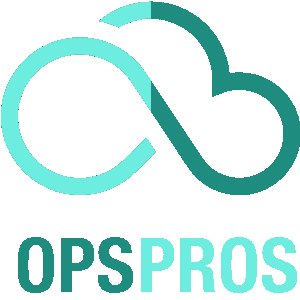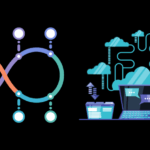 Continuous Integration (CI) is a critical component of the DevOps philosophy, which emphasizes faster delivery and higher-quality software products. Continuous Integration is the practice of continuously merging code changes into a central repository, followed by the automated testing and building of the code to ensure its correctness. CI is an essential building block of the Continuous Delivery pipeline, where code changes are continuously integrated, tested, and deployed to production.
Continuous Integration (CI) is a critical component of the DevOps philosophy, which emphasizes faster delivery and higher-quality software products. Continuous Integration is the practice of continuously merging code changes into a central repository, followed by the automated testing and building of the code to ensure its correctness. CI is an essential building block of the Continuous Delivery pipeline, where code changes are continuously integrated, tested, and deployed to production.
In this section, we will explore the importance of Continuous Integration in software development and how it benefits software development teams. We will also discuss the different stages involved in Continuous Integration and highlight some best practices to follow while implementing Continuous Integration.
Key Takeaways
- Continuous Integration is a key component of the DevOps philosophy.
- CI involves continuously merging code changes, followed by automated testing and building of the code.
- CI helps improve efficiency, code quality, and problem-solving speed within software development teams.
- CI best practices include maintaining a clean code repository, automating tests, and using version control effectively.
- CI is critical for achieving Continuous Delivery and DevOps goals.
Understanding Continuous Integration
Continuous integration (CI) is a software development practice that requires developers to integrate code changes into a shared repository frequently. This integration is then verified by an automated build, which allows teams to detect and resolve problems early in the development cycle. The main goal of CI is to reduce the time and effort required to identify and fix bugs, and to ensure that software is always in a releasable state.
CI differs from traditional development approaches, where code changes are integrated only after a significant amount of work has been completed. By contrast, CI requires developers to integrate code changes multiple times a day, ensuring that everyone is working on the same codebase and that code conflicts are avoided. This approach improves communication and collaboration among team members, which leads to better code quality and more efficient problem-solving.
Examples of CI Tools and Frameworks
There are numerous CI tools and frameworks available for implementing continuous integration in software development. Some of the most popular CI tools include:
| Tool | Description |
|---|---|
| Jenkins | An open-source CI tool that can be used to automate different stages of the software development process, including building, testing, and deployment. |
| Travis CI | A cloud-based CI platform designed for testing and deploying code to various platforms and languages. |
| GitLab CI/CD | A CI/CD tool integrated with GitLab that allows developers to test, build, and deploy code using the same repository. |
These tools and frameworks help teams implement CI in their software development processes and enable them to deliver features and updates faster and with more confidence.
Benefits of Continuous Integration
Continuous Integration (CI) offers a plethora of benefits to software development teams, including:
- Improved Collaboration: CI enables developers to work together more efficiently. By automatically merging code changes, team members can focus on writing better code instead of resolving conflicts. This collaboration leads to faster development cycles and better code quality.
- Reduced Integration Issues: When developers integrate their code frequently, it eliminates the chances of integration issues arising later in the development process. This saves time and resources while improving overall code quality.
- Faster Feedback Cycles: CI encourages developers to test their code quickly and regularly. This ensures that any issues are detected early on, and developers can receive feedback quickly, reducing the time it takes to resolve issues.
These benefits result in improved software development processes and ultimately lead to faster delivery of high-quality software products.
Continuous Integration Workflow
The Continuous Integration (CI) workflow involves a series of processes to ensure that code changes are integrated and tested frequently. This ensures that bugs are detected early and fixed before they can escalate into more significant problems. The CI workflow typically involves:
- Code Merging: The process of combining code changes from multiple developers into a single codebase.
- Automated Builds: The process of compiling and building the codebase automatically after each change.
- Unit Testing: The process of running automated tests to verify that the code changes do not introduce new bugs or break existing functionality.
CI workflows can be customized to fit the needs of specific software development teams and projects. However, adhering to the basic workflow of code merging, automated builds, and unit testing is essential for successful CI implementation.
Continuous Integration: Ensuring Code Quality
In software development, code quality is critical to ensure the overall success of a project. Continuous integration plays a significant role in achieving and maintaining high code quality throughout the development process.
Automated testing is a crucial component of continuous integration that ensures code quality. Through automated testing, developers can identify bugs and issues early in the development cycle, saving time and resources in the long run. Code analysis tools also help in identifying potential problems, ensuring that code quality is maintained throughout the development process.
Best practices related to ensuring code quality should also be followed. Maintaining a clean code repository, adhering to coding standards, and conducting regular code reviews are some of the best practices that can help in ensuring high-quality code.
Continuous integration also enables faster feedback cycles, allowing developers to address issues before they become major problems. This, in turn, ensures that code quality is not compromised, and the development process remains on track.
Overall, continuous integration plays a vital role in ensuring code quality in software development. By implementing continuous integration practices and adhering to best practices, developers can improve the quality of their code, minimize errors, and ensure a successful outcome for their projects.
Continuous Integration and Problem-Solving
One of the primary benefits of continuous integration in software development is its ability to aid in faster problem-solving. With CI, issues are identified and resolved more efficiently, minimizing the impact on the entire development process. This allows for better collaboration among team members, which is essential in problem-solving.
Automated testing, a key component of CI, helps to reduce the time and effort required to identify bugs or issues. By catching problems early in the development cycle, teams can address them before they escalate, resulting in a higher-quality end product.
In addition, continuous integration ensures that developers are working with the latest code version, reducing the risk of compatibility issues or conflicts when changes are integrated. This streamlines the problem-solving process by minimizing the time and effort required to identify and fix issues.
The Importance of Collaboration
Collaboration is a critical factor in successful problem-solving. With continuous integration, teams are better equipped to collaborate effectively. By working with the latest code version and receiving rapid feedback, team members can quickly identify and address issues. Any conflicts or compatibility issues can be resolved more quickly, with less disruption to the development process.
CI also enables teams to work in smaller, more manageable increments, reducing the complexity of problem-solving. Smaller, more focused tasks are easier to manage, allowing for more effective collaboration among team members.
Overall, the ability to collaborate effectively is essential in ensuring that development teams can solve problems quickly and efficiently. Continuous integration helps to facilitate this collaboration and is a key component of a successful problem-solving strategy in software development.
Best Practices for Continuous Integration
Implementing continuous integration requires careful planning and execution. Here are some best practices to follow for successful CI implementation.
Create a Clean Code Repository
Ensure that your code repository is clean and organized. Regularly remove unused code and dependencies. This will simplify the integration process and reduce conflicts in the code. Keeping the repository clean will also make it easier to revert to earlier versions of the code if needed.
Automate Tests
Automating tests is critical to ensure that the code changes do not break existing functionality. Use automated testing tools to run tests every time new code is committed to the repository. This helps detect issues early in the development cycle, when they are easier and cheaper to fix.
Use Version Control Effectively
Version control is essential for managing changes to the code base. Use a version control system such as Git to keep track of code changes and collaborate with team members. Ensure that all code is committed to the repository, and use descriptive commit messages to make it easier to track changes over time.
Choose CI Tools that Suit Your Team’s Needs
There are numerous CI tools available, each with its own strengths and weaknesses. Choose a tool that fits the specific needs of your team. Consider factors such as ease of use, scalability, integration with other tools, and licensing costs.
Maintain Communication and Collaboration
CI implementation requires good communication and collaboration among team members. Ensure that everyone is aware of the CI processes and their roles in it. Encourage frequent communication and collaboration among team members to identify and address issues as soon as they arise.
By following these best practices, teams can successfully implement continuous integration and realize its many benefits.
Challenges and Solutions in Continuous Integration
Despite its benefits, implementing continuous integration in software development can come with its own set of challenges. Here, we will explore some common difficulties faced during CI implementation and suggest possible solutions.
Managing Dependencies
One of the main challenges in implementing continuous integration is managing dependencies. In software development, there are often multiple libraries, frameworks, and modules that a project may rely on. Any changes made to these dependencies can potentially break the build.
A possible solution to this challenge is to use containerization technologies such as Docker. Containerized applications can be isolated from other dependencies, ensuring that any changes made to one dependency will not affect the others. This approach can also improve consistency across different environments.
Handling Large-Scale Projects
Continuous integration can become increasingly complex as the size of the project grows. Managing a large codebase can lead to longer build times, making it difficult to detect and address errors in a timely manner.
A possible solution to this challenge is to break down the project into smaller, more manageable units. This approach, known as microservices architecture, involves splitting the application into independently deployable services. This can reduce build times and improve scalability.
Ensuring Compatibility
Another challenge in implementing continuous integration is ensuring compatibility across different environments. Developers may use different tools or operating systems, which can lead to compatibility issues.
A possible solution to this challenge is to use virtualization technologies such as Vagrant. Vagrant allows developers to create and configure virtual environments that are consistent across different machines, ensuring that the build process runs smoothly on all systems.
By understanding and addressing these challenges, software development teams can successfully implement continuous integration and reap its numerous benefits.
Continuous Integration and DevOps
Continuous integration (CI) is an essential component of the DevOps pipeline. It promotes collaboration, communication, and automation within development teams. By integrating code changes often and automatically, CI helps teams work more efficiently, reduce integration issues, and improve the overall quality of code.
CI fits into the broader DevOps philosophy by supporting the goals of continuous delivery and continuous deployment. CI enables teams to identify and address issues early in the development cycle and ensures that code changes are tested, verified, and integrated regularly. This leads to faster feedback cycles and more reliable software releases.
CI plays a critical role in achieving DevOps goals. By automating the build and testing process, teams can focus on developing features and functionality. Additionally, by catching issues early in the cycle, teams can prevent integration problems that may arise later in the process.
Continuous Integration Tools and Frameworks
Continuous integration (CI) requires a range of tools and frameworks to ensure efficient implementation. Here are some of the most popular ones:
| Tool/ Framework | Description |
|---|---|
| Jenkins | One of the most widely used CI tools, Jenkins allows for easy integration with other tools and frameworks. It supports various programming languages and platforms. |
| Travis CI | This is a cloud-based CI tool that supports open-source software development. It automates the build, test, and deployment processes and offers integration with GitHub for version control. |
| CircleCI | CircleCI delivers a fast and efficient CI/CD pipeline for various platforms and programming languages. It provides integration with GitHub, Bitbucket, and other popular development tools. |
| GitLab CI/CD | This is an end-to-end CI/CD pipeline tool that offers integration with GitLab’s version control system. It supports a range of programming languages and has a powerful pipeline editor for easy customization. |
These are just a few of the many popular CI tools and frameworks available in the market for software development teams.
When selecting a tool, it’s essential to ensure that it meets your team’s specific needs, including support for your preferred programming language and platform. It’s also crucial to consider the complexity of your project and the scalability of your chosen tool as your project grows in size and complexity.
Continuous Integration in Industry Trends
Continuous integration has become a widely adopted practice in the software development industry. As organizations strive to achieve greater efficiency and speed in their development processes, CI has emerged as a critical component of the DevOps pipeline.
Recent industry trends show that the adoption of CI continues to grow, with more and more organizations recognizing the benefits it brings. A recent survey found that over 80% of organizations are using or planning to use continuous integration in their development processes.
One of the emerging trends in CI is the integration of artificial intelligence and machine learning capabilities. These technologies can help automate more aspects of the development process, such as improving the accuracy of test results and identifying potential issues before they occur. As AI and machine learning continue to evolve, we can expect to see even greater automation and efficiency in the continuous integration process.
Another trend that is gaining traction is the use of microservices architecture in software development. CI plays a crucial role in enabling the continuous delivery and deployment of microservices-based applications. As more organizations embrace microservices, CI will continue to be a key factor in ensuring their success.
The use of containers and container orchestration platforms, such as Docker and Kubernetes, is also on the rise. CI tools are increasingly being integrated with container platforms to enable seamless deployment and testing of container-based applications.
Overall, continuous integration is a rapidly evolving field that continues to push the boundaries of software development. As organizations seek to stay ahead of the competition, adopting CI will become increasingly essential.
Conclusion
In conclusion, continuous integration is a crucial component in the DevOps process that improves efficiency, code quality, and problem-solving. By integrating code changes early and often, teams can collaborate more effectively and resolve issues more efficiently.
Implementing continuous integration requires a commitment to best practices, including maintaining a clean code repository, automating tests, and using version control effectively. While challenges may arise during implementation, such as managing dependencies and handling large-scale projects, practical solutions exist to overcome these obstacles.
As the software development industry continues to evolve, adopting continuous integration is becoming increasingly important. Organizations that prioritize CI can achieve faster feedback cycles, increased collaboration, and improved code quality, ultimately delivering better products to their customers. Therefore, the importance of continuous integration cannot be overstated.
It is time for software development teams to embrace continuous integration as an essential practice in the DevOps process. By doing so, they will improve their overall development process and deliver more reliable products.
Take Action Now
Are you ready to implement continuous integration in your software development process? Start by assessing your team’s current workflow and identifying areas for improvement. Then, commit to implementing best practices and selecting a CI tool that suits your team’s needs. With dedication and effort, you can take advantage of the benefits that continuous integration provides.
Remember, in the world of software development, continuous integration is not a luxury – it is a necessity.
FAQ
Q: What is continuous integration (CI) and why is it important in software development?
A: Continuous integration (CI) is a development practice where developers regularly merge their code changes into a central repository, which is then automatically built and tested. This ensures that each code change is tested and integrated with the existing codebase, reducing integration issues and enabling faster feedback cycles. CI is important in software development because it improves efficiency, code quality, and problem-solving speed within development teams.
Q: How does continuous integration improve collaboration?
A: Continuous integration improves collaboration by providing a shared code repository and automated build and testing processes. This allows developers to work on separate code branches and easily merge their changes with the main codebase. It also provides a central location for discussing and resolving any integration issues or conflicts that may arise. Overall, CI promotes effective communication and collaboration among team members, leading to faster and more efficient development cycles.
Q: What are the benefits of continuous integration (CI)?
A: Continuous integration brings numerous benefits to the software development process. It reduces integration issues by catching errors early and ensuring that code changes are tested and integrated regularly. CI enables faster feedback cycles, allowing developers to address issues quickly and iterate on their code. It improves code quality through automated testing and analysis, leading to more reliable and maintainable software. Additionally, CI promotes collaboration and transparency within development teams.
Q: What is the workflow of continuous integration?
A: The typical workflow of continuous integration involves several stages and processes. First, developers make changes to their code in separate branches or feature branches. These changes are then regularly merged into a central repository. Next, an automated build process is triggered, which compiles the code and performs any necessary configurations. After the build, automated tests are executed to ensure that the code changes haven’t introduced any errors or regressions. Finally, feedback is provided to the developers, notifying them of any failures or issues that need to be addressed.
Q: How does continuous integration ensure code quality?
A: Continuous integration ensures code quality through automated testing and code analysis tools. These tools help identify bugs and issues early in the development cycle, allowing developers to address them before they can cause further problems. By continuously testing and analyzing the code, CI helps maintain a high standard of quality throughout the development process. Best practices, such as creating comprehensive test suites and implementing code review processes, further enhance code quality in CI environments.
Q: How does continuous integration aid in problem-solving?
A: Continuous integration aids in faster problem-solving by providing immediate feedback on code changes. When an issue arises, the CI system can pinpoint the specific code change or commit that caused the problem, allowing developers to focus their efforts on resolving it. CI also facilitates better collaboration among team members, as the shared code repository and automated testing processes provide a common ground for troubleshooting and problem-solving. Overall, CI speeds up the process of identifying and resolving issues, minimizing their impact on the development cycle.
Q: What are some best practices for successful continuous integration?
A: Some best practices for implementing continuous integration successfully include maintaining a clean code repository, automating tests and builds, using version control effectively, and ensuring a robust and scalable CI infrastructure. It is important to regularly clean up unused or duplicate code and keep the repository organized. Automating tests and builds helps ensure that code changes are thoroughly tested and integrated. Version control plays a crucial role in tracking changes and enabling collaboration. Lastly, implementing CI tools that align with the team’s needs and goals is essential for a successful CI implementation.
Q: What are the common challenges faced in continuous integration and their solutions?
A: Common challenges in continuous integration include managing dependencies, handling large-scale projects, and ensuring compatibility across different components or systems. To address these challenges, it is important to establish a clear dependency management strategy and regularly update dependencies to their latest stable versions. For large-scale projects, breaking down the codebase into manageable modules or microservices can help improve scalability. Ensuring compatibility can be achieved through thorough testing and integration processes, as well as maintaining clear communication among development teams.
Q: How does continuous integration fit into the DevOps philosophy?
A: Continuous integration is a vital component of the DevOps philosophy. It plays a crucial role in the DevOps pipeline by enabling frequent code integration, automated testing, and continuous feedback. CI complements other practices such as continuous delivery and continuous deployment, which are all focused on enhancing collaboration, automation, and efficiency within software development and operations. By adopting CI, organizations can achieve the goals of DevOps, including faster deployment cycles, improved code quality, and increased overall efficiency.
Q: What are some popular continuous integration tools and frameworks?
A: There are several popular continuous integration tools and frameworks available in the market. Some widely used ones include Jenkins, Travis CI, CircleCI, Bamboo, and GitLab CI/CD. These tools offer features such as automated builds, testing integration, and integration with version control systems. Organizations can choose the tool that best suits their needs based on factors such as scalability, ease of use, and integrations with other tools and platforms.
Q: What are the current industry trends in continuous integration?
A: Continuous integration continues to evolve and adapt to the changing software development landscape. Some current trends include the adoption of containerization technologies, such as Docker, to create lightweight and portable development environments. Another trend is the integration of continuous integration with cloud platforms and services, allowing for scalable and distributed CI systems. The use of machine learning and artificial intelligence in automated testing and code analysis is also gaining traction, enabling more intelligent and efficient CI processes.
James is an esteemed technical author specializing in Operations, DevOps, and computer security. With a master’s degree in Computer Science from CalTech, he possesses a solid educational foundation that fuels his extensive knowledge and expertise. Residing in Austin, Texas, James thrives in the vibrant tech community, utilizing his cozy home office to craft informative and insightful content. His passion for travel takes him to Mexico, a favorite destination where he finds inspiration amidst captivating beauty and rich culture. Accompanying James on his adventures is his faithful companion, Guber, who brings joy and a welcome break from the writing process on long walks.
With a keen eye for detail and a commitment to staying at the forefront of industry trends, James continually expands his knowledge in Operations, DevOps, and security. Through his comprehensive technical publications, he empowers professionals with practical guidance and strategies, equipping them to navigate the complex world of software development and security. James’s academic background, passion for travel, and loyal companionship make him a trusted authority, inspiring confidence in the ever-evolving realm of technology.






